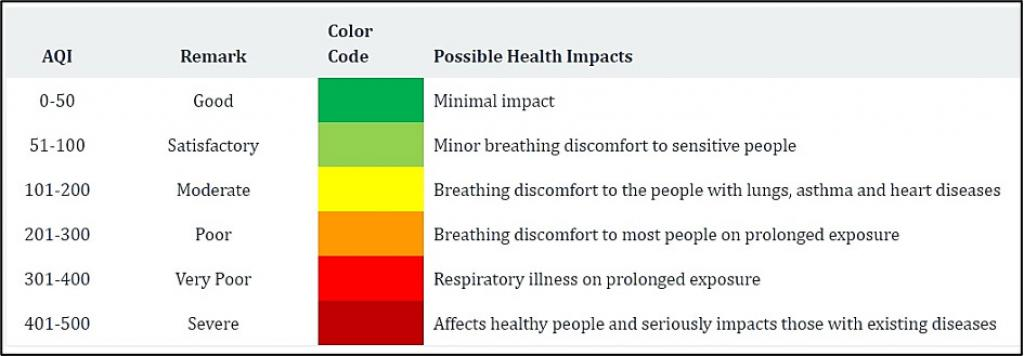Polity
SC dismisses plea to clarify ‘facts’, protect Savarkar’s name under Emblems Act - The hindu
The Supreme Court rejected a plea seeking to protect V.D. Savarkar’s name under the Emblems and Names (Prevention of Improper Use) Act, 1950.
Emblems and Names (Prevention of Improper Use) Act, 1950:
- A law to prevent commercial or improper use of national emblems, names, and symbols of public importance.
- Enforced on: September 1, 1950, via Gazette notification.
- Nodal Authority: Central Government, empowered to amend the protected list and frame rules.
- Objective:
- To prohibit misuse of names/emblems linked to national institutions or public trust.
- To safeguard the dignity of names and symbols of the government, historic figures, and international bodies.
- To prevent misleading commercial use or false affiliations in branding.
- Prohibition Clause (Section 3): Use of specified names/emblems in business, advertising, or patents without Central Government approval is banned.
- Applicability (Sections 1 & 2): Covers entire India and Indian citizens abroad; “name” includes abbreviations, and “emblem” covers flags, seals, and coats of arms.
- Ban on Registrations (Section 4): No registration of companies, trademarks, or patents using protected names/emblems allowed.
- Penalty (Section 5): Misuse is punishable with a fine up to ₹500.
- Mandatory Sanction (Section 6): Prosecution requires prior approval from the Central Government.
- Dynamic Schedule: Lists protected items like the Indian National Flag, Mahatma Gandhi’s name, Rashtrapati Bhavan, and others, which can be updated by the government.

Environment
Going beyond AQI: study shows why toxicity matters in measuring air pollution - Indian Express
A new study conducted in Kolkata has revealed that the toxicity of PM2.5 air pollutants increases significantly once concentrations cross a threshold of 70 µg/m³, peaking in damage potential around 130 µg/m³.
Key Highlights of the Study
- Toxicity Threshold Identified:
PM2.5 toxicity increases sharply after 70 µg/m³ and peaks around 130 µg/m³, beyond which additional concentration doesn’t proportionally raise health risks.
- Mechanism of Cellular Damage:
- Higher PM2.5 levels trigger excessive Reactive Oxygen Species (ROS).
- ROS damages body cells, especially the respiratory system.
- The body counters this with antioxidants, which are limited and slow to regenerate.
- An imbalance between ROS and antioxidants leads to oxidative stress and heightened cellular damage.
- Source-Based Toxicity Variation:
- Biomass and solid waste burning are major contributors to PM2.5 toxicity.
- Vehicular emissions contribute comparatively less to oxidative stress.
- City-Specific Toxicity:
- The toxicity threshold may vary from city to city based on the chemical composition of pollutants.
- Policy Implications:
- Current air quality standards are based on concentration, not toxicity.
- Health impacts depend on both amount and chemical nature of pollutants.
- Recommends shifting from concentration-based alerts to toxicity-informed air quality thresholds for better health protection.
What is AQI - The AQI is a scale that provides real-time information on the amount of pollution in the air. The U.S. Environmental Protection Agency (EPA) developed the index as a way of reporting air quality issues directly to the public.

PM2.5:
- Definition: PM2.5 are fine particles ≤2.5 micrometers in diameter—30 times smaller than a human hair.
- Health Risk: Can penetrate deep into lungs and enter the bloodstream.
- Health Effects: Causes asthma, reduced lung function, respiratory irritation, and heart issues.
- Vulnerable Groups: Children, elderly, and people with heart/lung diseases are most at risk.
- Emerging Concerns: Linked to negative effects on brain function and maternal-fetal health.
- Main Sources: Emissions from vehicles, industries, wildfires, and construction sites.
- Why It Matters: PM2.5 contributes significantly to air pollution and poor public health.
IOB, Amul, Richplus to promote organic farming- The hindu
Indian Overseas Bank signed an MoU with AMUL and Richplus to promote organic farming and empower around one lakh rural farmers.IOB launched a co-branded Organic Farming Card and “Harit Kranti” credit scheme in partnership with AMUL and Richplus to support organic farmers with inputs, credit, and training.
What is Organic Farming?
Organic farming is an eco-friendly and sustainable agricultural practice that avoids the use of synthetic fertilizers, pesticides, and genetically modified organisms. Instead, it focuses on natural inputs like compost, farmyard manure, and crop residues to maintain soil fertility and control pests and diseases.
Status of Organic Farming in India:
- India ranks 4th globally in terms of certified organic agricultural area (IFOAM Statistics 2022).
- Madhya Pradesh leads in certified organic area, followed by Maharashtra, Rajasthan, Gujarat, and Karnataka.
- Sikkim became India’s first fully organic state, adopting organic farming on approximately 75,000 hectares.
- India holds the top position globally in terms of the number of farmers engaged in organic farming.
- In 2022–23, India exported organic products worth $708 million, with significant potential to expand in the global organic market, currently valued at $138 billion.

Government Initiatives for Promoting Organic Farming in India
- Paramparagat Krishi Vikas Yojana (PKVY):
Provides end-to-end support for organic farmers — from production to certification, processing, marketing, and post-harvest management. It also includes training and capacity building.
- Mission Organic Value Chain Development for North Eastern Region (MOVCDNER):
Dedicated scheme for the North Eastern states to promote organic farming and support farmers through value chain integration.
- Jaivik Kheti Portal:
A digital platform to help organic farmers sell their produce, connect with buyers, input suppliers, and promote the benefits of organic farming.
Economy
Viksit Krishi Sankalp Abhiyan’ launched at OUAT, Bhubaneswar- PIB
The ‘Viksit Krishi Sankalp Abhiyan’ was launched at the Odisha University of Agriculture and Technology (OUAT) campus in Bhubaneswar, marking a major step towards agricultural transformation in India.
About Viksit Krishi Sankalp Abhiyan
Viksit Krishi Sankalp Abhiyan is a nationwide outreach initiative aimed at promoting sustainable agriculture by bridging the gap between research and farming. It facilitates direct interaction between farmers and over 16,000 agricultural scientists, KVKs, and officials to integrate scientific knowledge and technology with grassroots feedback.
Objectives and Key Features
- Nationwide Campaign: Launched across 2,170 locations in India to bring a positive transformation in agriculture.
- Direct Farmer Engagement: Agricultural scientists and government officials (central & state) interacting with farmers at the grassroots level.
- Promotion of Science-based Agriculture: Emphasis on connecting 16,000+ ICAR scientists with farmers to offer location-specific, practical advice.
Major Announcements and Measures
- Support for Farmer Incomes:
- Agriculture is being promoted as a profitable business model.
- India is producing record amounts of paddy, wheat, maize, etc.
- Global Vision:
- India aims to become the “Food Bank of the World”, ensuring food security for 145 crore Indians and expanding agri-exports.
- Subsidized Agricultural Loans:
- Interest subsidy up to 4% under Kisan Credit Card (KCC) scheme.
- In some states, combined with state contribution, effective interest could reach 0%.
- Irrigation Expansion in Odisha:
- Odisha government to develop irrigation facilities over 15 lakh hectares.
- Crop Insurance:
- Pradhan Mantri Fasal Bima Yojana (PMFBY) provides financial protection against climate-induced crop losses.
Karnataka promulgates Ordinance for providing security to platform-based gig workers - The Hindu
The Karnataka Platform-Based Gig Workers (Social Security and Welfare) Ordinance, 2025 has been passed to establish a legal framework for the protection and welfare of gig workers in the state, ensuring their access to social security benefits and support mechanisms.
Who are Gig Workers?
According to Section 2(35) of the Code on Social Security, 2020, a gig worker is: “A person who participates in a work arrangement and earns from such activities outside of a traditional employer–employee relationship.”
Key Features of the Karnataka Gig Workers Ordinance, 2025 :
- State Welfare Board: Establishes a dedicated Welfare Board at the state level to oversee the well-being of gig workers.
- Welfare Fee by Aggregators: Platforms such as Zomato, Ola, Swiggy, and Amazon are required to contribute a welfare fee of 1% to 5% per transaction involving gig workers.
- Welfare Fund Composition: This fund will be built from contributions made by aggregator platforms, gig workers themselves, and government grants.
- Additional Provisions:
- Ensures protection against arbitrary terminations.
- Introduces a unified identification number valid across all platforms.
- Mandates greater transparency in platform algorithms and automated decision-making systems that affect workers.
